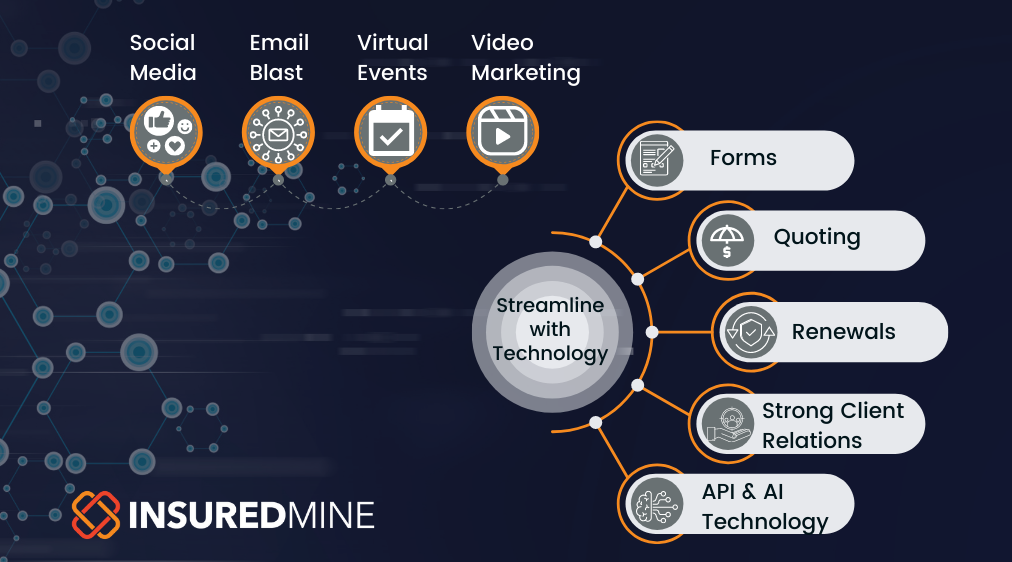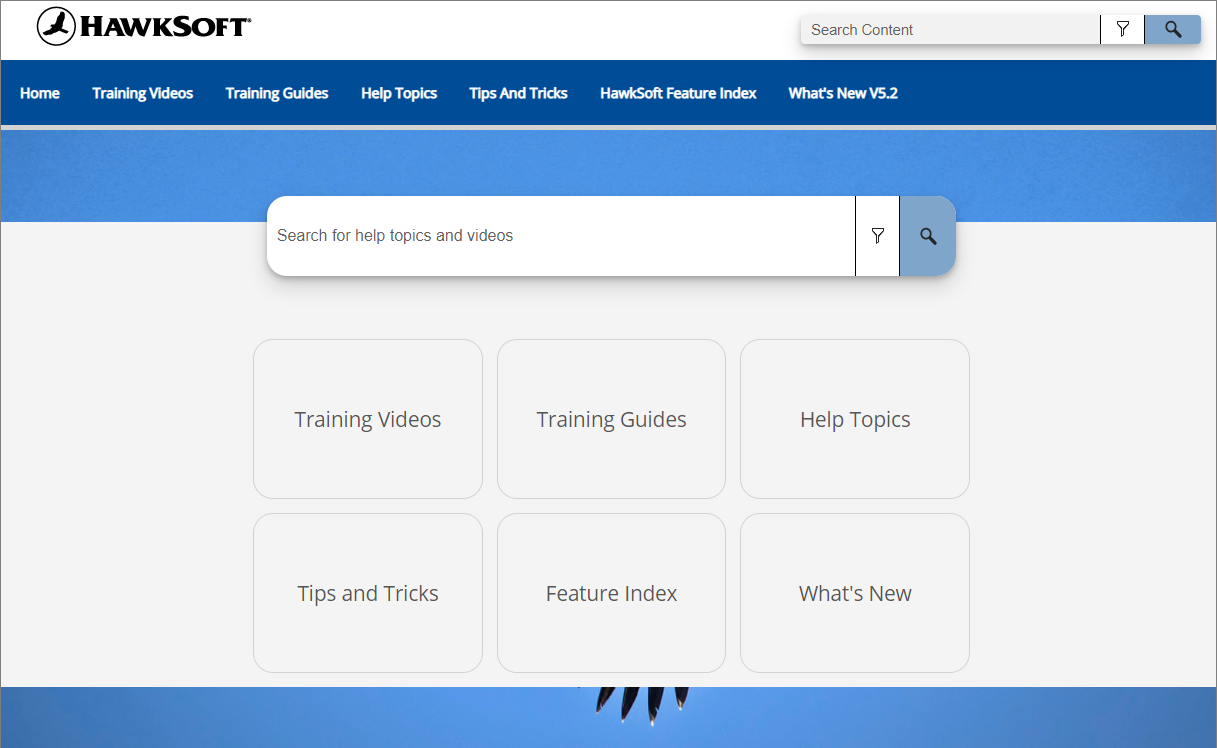At the HawkSoft User Group National Conference in Orlando this May, we had a chance to sit down with Chris Cline, the new executive director of the Big “I” Agents Council for Technology (ACT). Chris comes to ACT after 28 years at Westfield Insurance, most recently as a national agency distribution leader, and he has worked closely with the Big I and ACT on a number of projects in the past. Chris is replacing Ron Berg, who has retired after serving ACT for 8 years. Ron is a dear friend and colleague to many at HawkSoft, and we want to thank him for all the incredible work he’s done for independent agencies throughout his career, as well as welcome Chris to the role. HawkSoft looks forward to continuing to collaborate with ACT to help educate and raise awareness of important industry topics to agencies across the nation.
We spoke with Chris about his vision for the future of ACT, and how it can help independent agencies understand and respond to technology developments in the industry.
In this article:
- Embracing evolution, not revolution
- Solving for real issues (not perceived issues)
- Working on the same team
Watch now: Chris Cline discusses agency considerations
when implementing new technology (2 min)
Embracing evolution, not revolution
“Moving into this role has been more about evolution than revolution,” Chris says. “Ron Berg and Ginny Winkworth built an evolutionary plan for this next phase of what ACT could be, but they intentionally left spots where the next person in the role could influence it. ACT has historically had a huge focus on download and a lot of the transactional things that occur in an agency, but the technology needs of the channel have changed significantly since then. There's so many things that could be addressed in our industry, and part of the first wave of this next step will be trying to get really honed in on the things we can actually influence.”
He points out that one of the challenges of the technology industry is that by the time an organization like ACT can gather data from agencies and put together a position on a certain element, that technology may have already evolved or moved on. “We need to make it more about how to help agencies think about issues and frame them for their agency so they can make deliberate, informed decisions about what will work best for them,” Chris says.
“We need to help agencies think about issues at a high level and frame them for their agency so they can make deliberate, informed decisions about what will work best for them.”
He points out that awareness is one of the first issues to tackle. “ACT has so many quality materials that all the work groups and member supporters have built, but there are still so many people that don’t know they exist.” He observes that even at Big I events he attends, people are often unaware of what ACT is and the resources it provides.
Updates to ACT’s website and social media strategies can help with this, he says. “We can break big topics into smaller bites for agencies to digest through different channels, while pointing back to larger resources,” Chris explains, “and facilitate conversations between agents and other members of the industry.” This approach can help agencies learn about important topics without overwhelming them with too much information.
Solving for real issues (not perceived issues)
Another area where Chris thinks ACT can help agencies focus is asking the right questions and solving the right problems—not simply implementing a change or tool because they see others doing it. “I’ve talked to so many agencies who have made technology purchases out of FOMO (fear of missing out),” he says, “or because they think they’re at a competitive disadvantage if they don’t buy whatever the shiny new toy is.” As an example, he brings up the iconic scene in the movie Christmas Vacation when Chevy Chase has hundreds of disparate Christmas decorations plugged together with no rhyme or reason. When he initially tries to turn on the display, nothing happens.
Scene from Christmas Vacation
He sees an important lesson in this example. “I think a lot of agencies would benefit from stopping to take a deep breath and think about their unique agency’s needs and how a tool is actually going to play into their strategy,” he says. “Nothing is for everybody.” He points out that even two agencies that may look alike in size and premium could still be vastly different—one could be community based, service oriented, working only on a few counties and focused on slow growth, while the other might use virtual assistants, carrier service centers, and be SEO driven, exclusively writing small business across the country.
“There’s nothing right or wrong about either model,” he says, “but the technology needs aren’t going to be the same for both of them. I think ACT can have a role in helping agencies understand who they are and making them feel safe and comfortable being intentional about what they are, and helping them understand that they’re not at a disadvantage just because they're not doing A, B, or C that another agency might be doing.”
Before an agency gets its head turned by a piece of technology simply because it’s a hot topic in the industry, Chris recommends doing real research into whether it solves a problem at the agency, and crunching the numbers on the cost and ROI. “How many customers would it help?” he asks. “How many implementations does the tool have? How many other agencies that are truly similar to yours are using it, and what has been their level of success? Is it sustainable? See how it fits into your overall vision for an agency, the culture you want to build, the customers you want to serve, the types of clients you want to serve, the geography you want to serve. Those things are incredibly important to have really thought through and come to grips with before you make a big decision for your agency.” Looking for some pointers on this process? The HawkSoft User Group has posted several blogs about how an agency can evaluate whether a “shiny toy” is worth implementing, and how to go about doing so (see part one here and part two here).
“Agencies would benefit from stopping to take a deep breath and think about their unique agency’s needs and how a tool is actually going to play into their strategy. See how it fits into your overall vision for an agency, the culture you want to build, the customers you want to serve, the types of clients you want to serve, the geography you want to serve.”
Working on the same team
We asked Chris how software providers such as HawkSoft can help ACT and other technology-related organizations work together for the improvement of the industry as a whole. “What makes the independent insurance agency channel special and what draws everyone to it is its unique nature and the independence it offers,” he responds. “Every agency is its own unique business and even though they all share a common goal, they all accomplish it very differently.”
“We can work together to understand where we all fit, because there’s room for all of us here. And if we act like we’re really all on one team, there’s some real value that could come out of that.”
He points out that the technology vendors in the industry face the same issue. “There are hundreds or even thousands of carriers and technology providers that do things in different ways, and standardizing anything across that many groups is aspirational. But companies can start by trying to really understand the agencies they serve and what they’re trying to accomplish, rather than simply trying to sell their product. We can work together to understand where we all fit, because there’s room for all of us here. And if we act like we’re really all on one team, there’s some real value that could come out of that.”
HawkSoft is proud to work with organizations like ACT that work to solve technology problems faced by independent agents. We welcome Chris to the team and look forward to continuing to work alongside ACT.
See free agency resources from ACTBig I's Agents Council for Technology (ACT) produces resources on technology for agencies, such as a remote work security guide, customer experience assessment, cyber guide, disaster plan, and more. No need to be a member of Big I to access these resources! |







